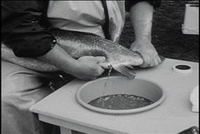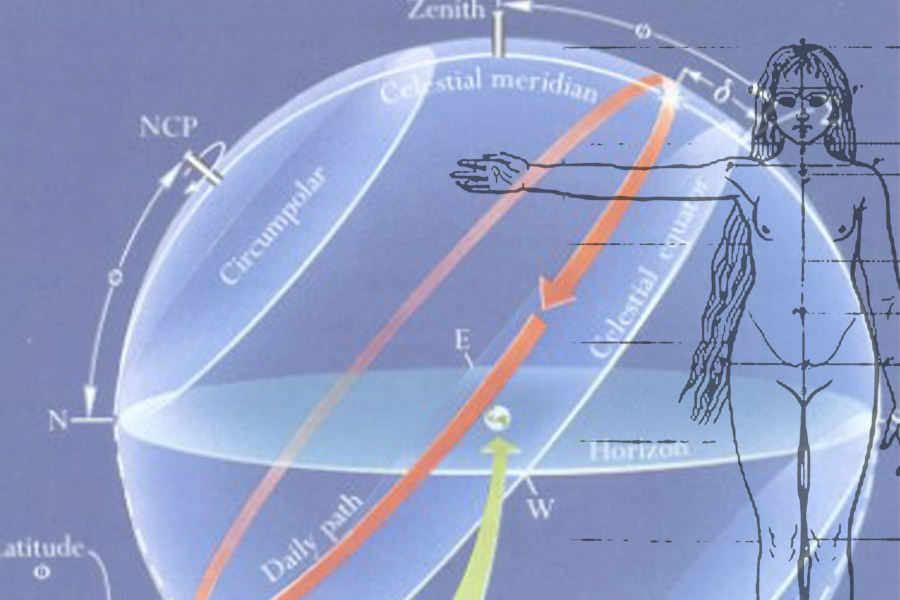
To Be Regained
Zach Iannazzi (in person) - 2009, 10:00, 16mm, Williamsburg, MA
An unsettling of wilderness authenticity - the images seen are of an unintended intersection between natural and artificial landscapes - restoration efforts attempt to return what was once lost.
The film approaches the subject of humanity's attempts to correct its imprint on nature, more specifically, interventions with anadromous fish reproductive and migratory cycles on dammed-up and polluted rivers.
Iannazzi will mix the sound live during the screening of his film. Zach Iannazzi - born in Massachusetts, lives in San Francisco.
Questions with Zach Iannazzi by Liz Wing
Liz Wing: About the footage: was it taken from private or public collections, and was it difficult to collect? Is it from many different decades, or from a discreet span of time? Are we seeing salmon runs on the east coast, the west coast, or both?
Zach Iannazzi: The footage comes from all over the place, I shot some of it myself with my Bolex, in both color and b&w, reversal and negative, but then a lot of the film is made up of found footage, and some of that came from educational films, other shots came from older sport fishing films, and most of the rest was found in a mystery can labeled "Pennsylvania Fish Commission". There are also some brief abstract sections which were made without a camera in the middle of the night, by throwing 16mm Hi-Con film into the Connecticut River. Everything in the film was either shot, or found on 16mm, and then spliced together on a Steenbeck flatbed editor. The film was edited silent, the sound was arranged afterward. I spent about 7-8 months collecting footage, shooting, and recording interviews with the guys at the Richard Cronin National Salmon Station in Sunderland, Massachusetts.
The footage spans many decades, and some of it I have no way of knowing when it was made. The crowd scenes at the beginning are probably from the mid 70s, but some of the sport fishing footage is from at least 10-15 years earlier. All of the footage, well aside from one or two quick shots which I don't know when or where those were shot, is of Atlantic Salmon in New England, or the mid-Atlantic.
LW: The title and minor drone that acts as a minor soundtrack give the film an edge, preventing the viewer from engaging with the footage uncritically. Can you tell us a little bit more about what the viewer is bearing witness to?
ZI: Most of the footage was shot in the fall of 2007, while the Federal Fish and Wildlife service were artificially spawning the Connecticut River salmon. Each year they typically get about 700,000-800,000 eggs in total, about 8,000 per fish, some of which are then raised in elementary school classrooms, and then distributed by the kids in the spring on the river. Unfortunately, the year I was filming the salmon tested positive for a European IPN virus. That had never happened before, not once in the program's 30 year history, and subsequently all of the eggs, and the brood stock were brought to a station Vermont where they were destroyed. This isn't addressed directly anywhere in the film, but it definitely influenced some of the decisions I made while editing.
